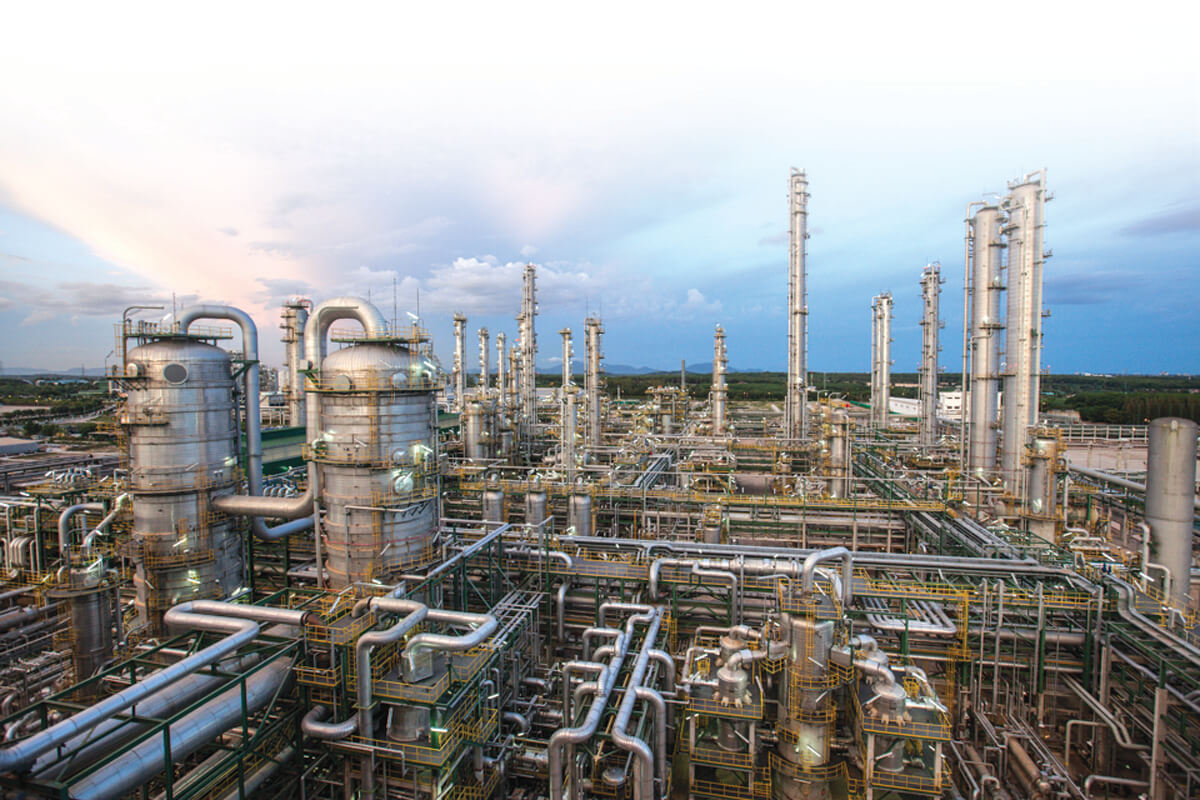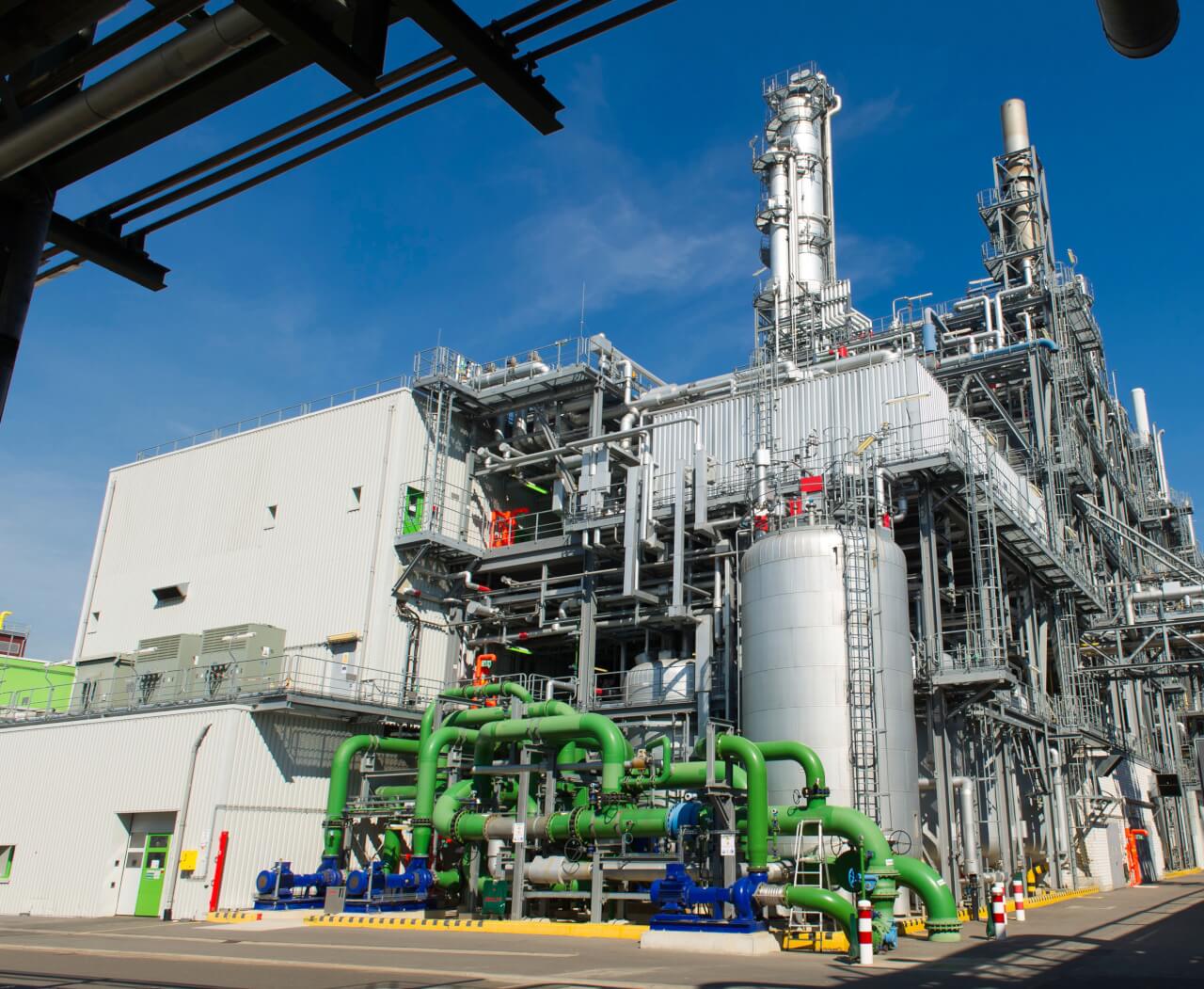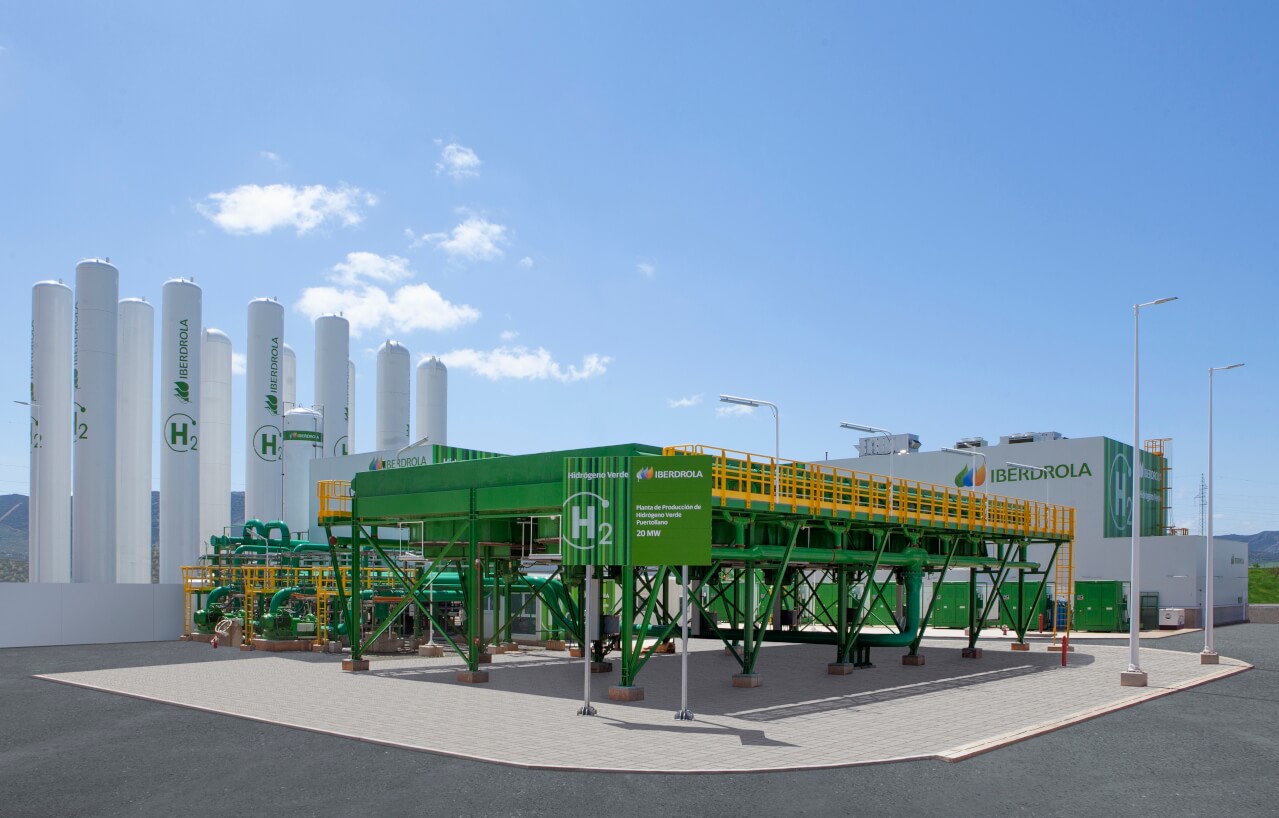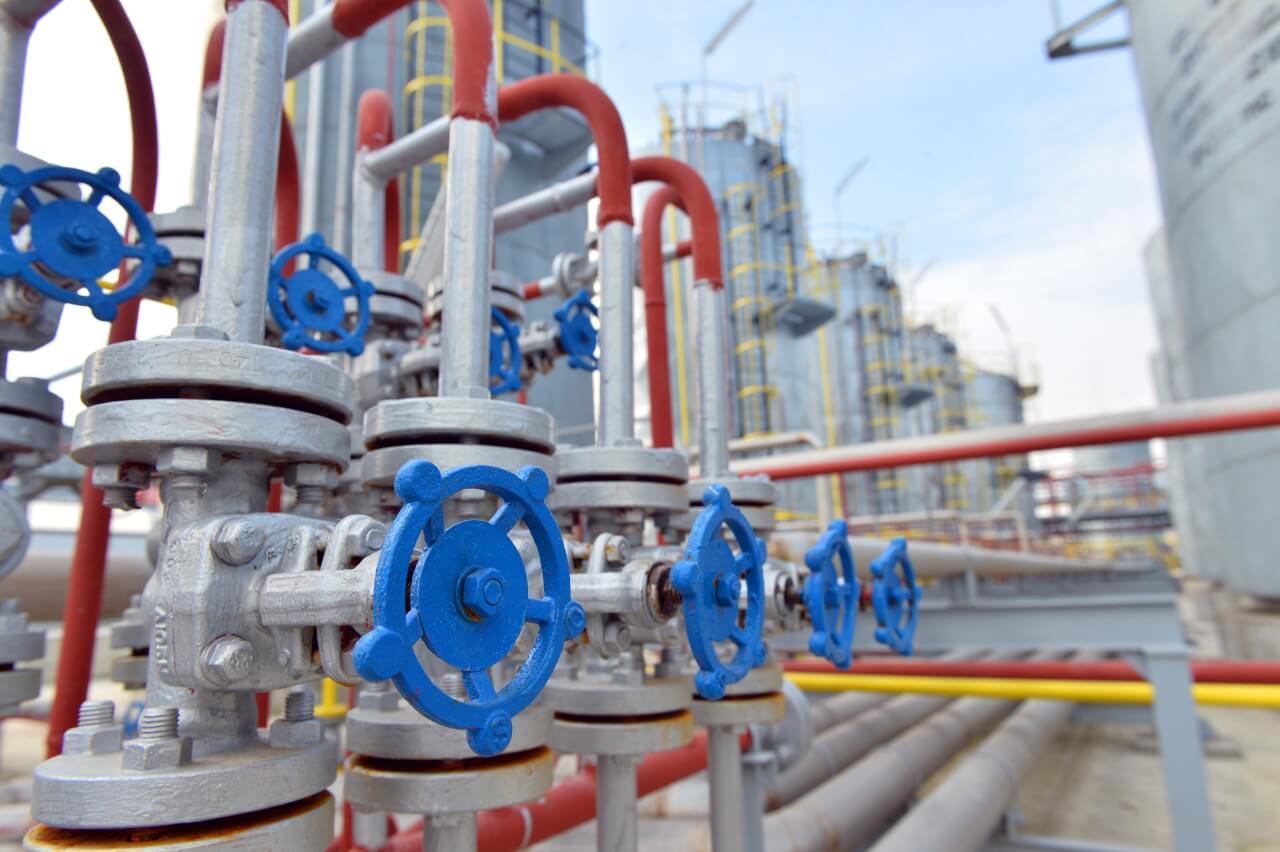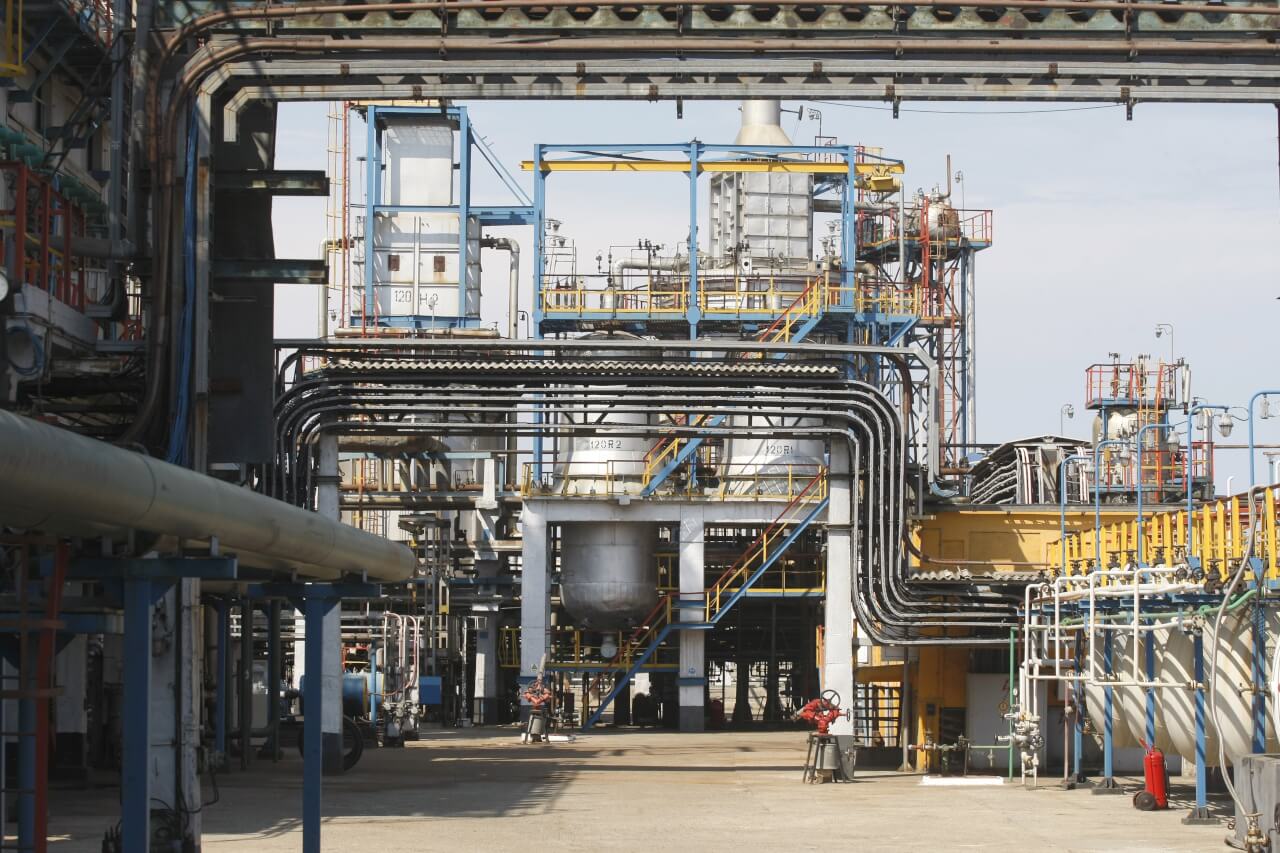Roche’s production facility at Penzberg in Germany. Photo: Roche
The political and economic state of flux which the world faces is fully reflected in the chemical and petrochemical sectors. Demand has stagnated and the industry faces higher costs due to regulation. The drive to sustainability remains an important goal, while AI is being leveraged to bring down costs.
By James Chater
Outlook
Even before the recently introduced US tariffs, chemicals and petrochemicals faced weakening demand and oversupply problems. Cost considerations are casting doubt on green hydrogen projects and leading to a reappraisal of blue (natural-gas-operated) hydrogen. Indeed, green initiatives in the USA are likely to be slowed or halted under the current climate-sceptical administration. Tariffs have complicated the task of making good investment decisions. The repercussions are multiple: US refiners face higher costs if tariffs on crude oil imports are imposed; the recently launched Long Son Petrochemicals has asked Vietnam to impose tariffs on imported polyethylene and polypropylene after it suspended operations; Chinese retaliatory tariffs on LPG imported from the US could lead to shutdowns of Chinese petrochemical plants. With regard to projects, Asia is, as usual, in the lead, followed by the Middle East and North America. However, Saudi Arabia’s SABIC is cutting expenses after making a loss.
Chemical and petrochemical
In Asia, China is investing to gain greater self-sufficiency. In 2024 Sinopec and Saudi Aramco started to construct a refining and chemical integration complex in Fujian province. In the same region, SABIC is to build a petrochemical complex. The Shell-CNOOC joint venture is expanding its petrochemical plant in south China’s Guangdong province.
In India, the chemical and petrochemical sectors are expected to grow rapidly to meet domestic demand, with substantial investment from both the public and private sectors. The Gujarat refinery of Indian Oil Corporation is being expanded with the addition of petrochemical and lubricant facilities. Indian Oil is also building a petrochemical complex in Paradip, Odisha. Ganesh Benzoplast Limited (GBL) is supplying a chemical tank farm for JSW Jaigarh Port Ltd. BASF has broken ground on a new plant to increase the production capacity of its Cellasto® microcellular polyurethane (MCU) in Dahej.
The high growth in the rest of East Asia is demonstrated by numerous projects, though tariffs are throwing this growth into doubt. Other important projects include the Vietnamese government’s decision to expand the Dung Quat complex and Stavian’s investment in a polypropylene plant in Quang Ninh province.
In the Middle East, the most ambitious project is the collaboration between China’s Simopec and Saudi Aramco to enhance integrated refining and petrochemical synergies at the Yasref petrochemical site in Yanbu industrial city. In addition, two new complexes have been approved for Jubail: LyondellBasell’s and Sipchem’s mixed feed cracker and production facility for ethylene and propylene derivates, and the Sipchem and LyondellBasell’s jointly owned Al-Waha complex. Tasnee is also planning a complex in Jubail to start up in 2030.
North America continues to benefit from its abundance of fossil feedstock. Dow is planning a new plastic plant in the Canadian province of Alberta, including Canada’s largest blue hydrogen production facility. Wolf Midstream will expand production of ethane to meet petrochemical demand. TCL USA is constructing phase 1 of its petrochemical and fine chemicals/food ingredients plant in West Virginia, USA. Several petrochemical projects are planned for the USA: as of 2024, as many as 118 petrochemical projects, including both newbuilds and expansions, were being planned or were underway. However, these are mired in controversy as it is claimed they would threaten climate targets by increasing US petrochemical emissions by 38% (1). Europe is seeing several projects take shape. Total Energies is repurposing its Antwerp site, switching out an ethylene cracker for production of sustainable aviation fuels, using green hydrogen from offshore wind farms. Also in Antwerp, Ineos has announced it will build an ethane cracker and a PDH unit for the production of ethylene and propylene. BASF is very active: last year it expanded its ammonium chloride plant in Ludwigshafen and is investing in an alcoholates plant, also at Ludwigshafen. Meanwhile Turkey is seeking to reduce its imports by expanding its petrochemical capacity. SASA is building a PTA plant in Yumurtalık, Adana, and planning a methane-based chemical facility in the Thrace (Trakya) region. Bayegan Group intends to increase production of polypropylene (important for carpets) with a plant in Hatay province. Azerbaijan’s SOCAR is planning several new polyolefin production facilities in Turkey, along with an ethylene and propylene complex in Garadagh, Azerbaijann. Other projects are taking shape in Georgia (oil refinery, petrochemical production and terminal based at Supsa) and Russia (Sibur’s plant to produce polymerization catalysts used in the manufacture of polyethylene and polypropylene).
Fertilizers, urea and ammonia
The world fertilizer market is expected to grow 4.1% between 2025 and 2030 (2), supported largely by the demand of a still increasing world population. In the last year alone, Exxon has announced a fertilizer plant in Guyana, while Stamicarbon’s urea and ammonia technology is being used in plants in Odisha (India), Canada, Egypt, China and France, while Toyo will supply a urea plant in Angola. Ammonia, a precursor for urea, is attractive as a means of storing energy at a higher temperature than liquefied hydrogen. The world’s largest green ammonia plant is in Nelson Mandela Bay, South Africa. A collaboration between Hive Hydrogen and Linde plc, this plant will be powered by wind and solar energy. Another plant that is about to enter operation is Woodside Energy’s Beaumont New Ammonia Project. CF Industries has formed a joint venture with JERA and Mitsui to build an ammonia plant with a carbon dioxide dehydration and compression unit. Other green ammonia projects are taking shape in Tunisia, India and Indonesia.
Hydrogen
Hydrogen plays a key role in the energy transition because of green hydrogen’s zero-carbon output. Despite fears about its cost, green hydrogen is expected to grow a staggering 49.15% per year between 2025 and 2035 (3). The European Commission supports the industry with the Hy2Move project, which promotes13 hydrogen initiatives across member states. In Spain, the Cartagena Hydrogen Network will feature an electrolyser powered by wind and sun. In France, Lhyfe is constructing its largest electrolytic hydrogen production site in Le Cheylas, Auvergne-Rhône-Alpes. BGR Tech and Chemie Tech are collaborating to develop green H and ammonia projects. In California, USA, the Calistoga Resiliency Center will combine hydrogen fuel cells with battery storage, while in Saudi Arabia, the NEOM Green Hydrogen Project is set to become the world’s largest hydrogen facility powered entirely by renewable energy. India has launched its first green H plant (INOX), and under its government-backed National Green Hydrogen Mission, many more will follow.
Pharmaceutical
With an aging population and a rapid increase in demand for medicines, pharma is to some extent protected from the headwinds faced by chemical and petrochemical. The industry is under pressure to lower the cost of medicine, and it will probably do so thanks to AI. Already, it seems that AI is driving 30% of new drug discoveries, leading to savings. Several companies are investing heavily in new plant, for example Roche (USD 50 billion in the USA over five years), Novo Nordisk investments in the USA and Denmark) and AstraZeneca (USD 3.5 billion in the USA).
Procurement focus
Sasa Polyester’s PTA complex was awarded to Técnicas Reunidas in 2020. For this project Ampo Poyam Valves delivered around 7,100 stainless-steel, duplex, superduplex and titanium ball, gate, globe and check valves up to 32” and 1500 lbs. Also ordered were 420 titanium valves up to 14” and 600 lbs.
Towards zero carbon
The drive towards climate neutrality is also being led by Europe. The European Green Deal stipulates climate neutrality by 2050, a goal supported by the European chemical industry through their official mouthpiece CEFIC.
This goal manifests itself in various ways. Recycling technology is taking centre stage. For instance, Reju, supported by Technip Energies, has invented a process to break down polyester into pure monomers through depolymerization before high-quality polyester via repolymerization. BASF is involved with several recycling ventures: for instance, in March 2025 it started up a plant in China to produce sustainable products for the textile industry by transforming textile waste into recycled textiles. Polypropylene recycling is being advanced by PureCycle Technologies, which is collaborating with Landbell to recycle polypropylene for use in Europe.
Carbon capture can also be harnessed to promote recycling: BASF and Forestal de Atlántico are jointly advancing the production of e-methanol through carbon capture.
Another step being take is to replace fossil with bio-based feedstock.
The world’s first biomass-balanced polyethersulfone is being produced by BASF. The renewable feedstock comes from organic waste. Kemira and IFF are jointly setting up a facility in Finland
to manufacture renewable bio-based products based on sugar.
Another way to improve efficiency is to improve catalysts. In December 2024 BASF opened a research centre in Ludwigshafen to serve as a hub for pilot-scale synthesis of chemical catalysts. New catalysts can boost production through chemical processes instead of combustion, thereby saving energy. For example, a catalyst has been developed allows selective production of hydrogen and acetic acid from ethanol, with no direct carbon dioxide emissions.
Other developments are the increased use of AI to enable real-time monitoring of production processes, improve safety and reduce waste. Robotics and IoT devices form part of this drive, while blockchain is being used to ensure transparency and ethical sourcing.
Materials
The uniquely corrosive nature of chemical and petrochemical processes requires alloys that are strongly resistant to extreme acidic and caustic conditions. This is why Alleima introduced SAF™ 3006 (UNS S83071), which is carefully balanced to combine high structural stability and excellent weldability (4). Its mechanically strength exceeds that of SAF™ 2507, and it is likely to supersede this grade in the seamless tubes of heat exchangers in the chemical and petrochemical industries.
In the treatment of liquefied hydrogen, austenitic grades are standard. However, one aspect of hydrogen production that is often overlooked is the material requirements of electrolysis. Will the rush to produce hydrogen cause a shortage of the materials used to make the fuel cells that convert chemical energy into electricity? (5) Alkaline electrolysers require nickel, zirconium and aluminium. A less common type, proton exchange membrane (PEM), requires the rarer minerals platinum, palladium and iridium. Solid oxide electric cells require nickel, zirconium, lanthanum and yttrium.
The supply situation for almost all these materials is precarious. The British Stainless Steel Association reported a nickel shortage in 2024, while an aluminium shortage in 2025 is feared. The zirconium market is tight, though sources opening up in Ukraine could provide relief. Demand for palladium and platinum exceeds supply, while yttrium and lanthanum are extracted from rare earths, of which China currently has a near monopoly. Recently the country has restricted rare earth exports, including yttrium. And so we see how the current trade wars could railroad at least one key aspect of the energy transition.
In pharmaceuticals, the most common stainless-steel grades are types 304, 309 (for heat resistance) and 316, used in tubing, tanks, hypodermic needles and orthopaedic implants. In these applications, not only cleanability and corrosion resistance, but also heat resistance and hygiene are important.
References
(1) https://www.ciel.org/news/report-reveals-us-petrochemical-buildout-undermines-climate-goals/; https://www.ciel.org/the-us-petrochemical-buildout-americas-next-big-climate-mistake/
(2) Fertilizers Market Global Forecast Report 2025-2030, GlobalNewsWire.
(3) Market Research Future, “Green Hydrogen Market.”
(4) https://stainless-steel-world.net/superduplex-saf3006-vs-saf2507/
(5) https://thebreakthrough.org/issues/energy/are-there-enough-critical-minerals-for-hydrogen-electrolyzers.
About this Featured Story
Appearing in the June 2025 issue of Stainless Steel World Magazine, this Featured Story is just one of many insightful articles we publish. Subscribe today to receive 10 issues a year, available monthly in print and digital formats. – SUBSCRIPTIONS TO OUR DIGITAL VERSION ARE NOW FREE.
Every week we share a new Featured Story with our Stainless Steel community. Join us and let’s share your Featured Story on Stainless Steel World online and in print.



